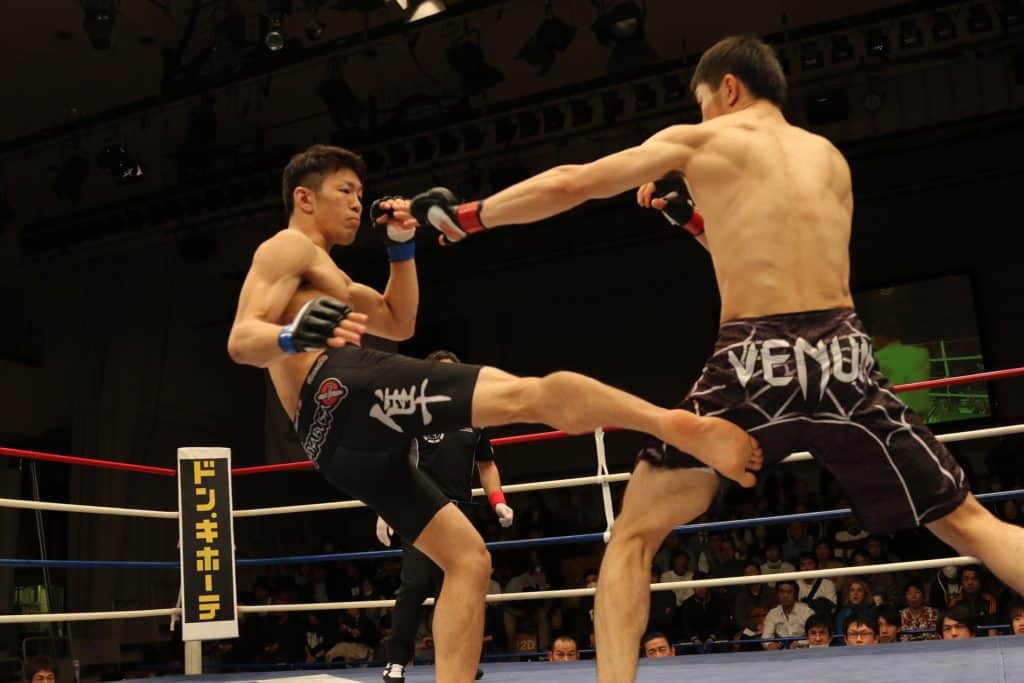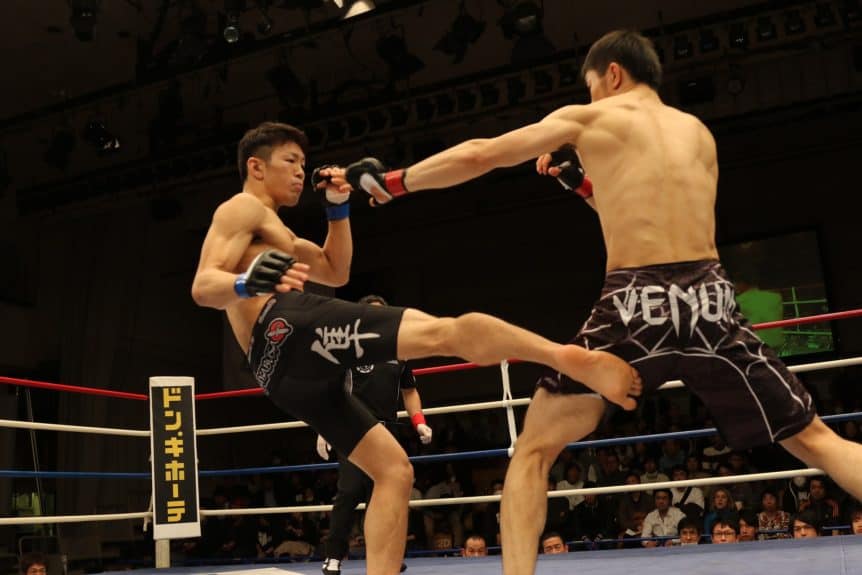
When you think of Mixed Martial Arts (MMA), disciplines like Brazilian Jiu-Jitsu, Muay Thai, wrestling, and boxing often steal the spotlight. But there’s another martial art making waves in the cage, often flying under the radar: Taekwondo. This Korean martial art, known for its dynamic kicks and agile footwork, has produced some of the most electrifying moments in MMA history.
So, is Taekwondo good for MMA fighting? Absolutely. Taekwondo equips fighters with exceptional timing, speed, precision, and range control, while its arsenal of kicks can catch opponents off guard. In this post, we’ll dive into how Taekwondo helps in MMA, explore the techniques that make it effective, and highlight top fighters who’ve leveraged their Taekwondo roots to dominate the sport.
Why Taekwondo Fits in MMA
MMA is a hybrid combat sport that blends techniques from various martial arts to create well-rounded fighters. Unlike traditional martial arts with a singular focus, MMA demands proficiency in striking, grappling, and ground fighting. Taekwondo, with its emphasis on powerful and precise kicking, complements this mix by adding a unique dimension to a fighter’s stand-up game. While it’s not a standalone solution—pure Taekwondo lacks grappling or clinch skills—it’s a fantastic foundation when paired with other disciplines.
Fighters with a Taekwondo background stand out for their ability to control the fight’s pace and distance. They move fluidly, darting in and out of range, making it tough for opponents to close the gap. This mastery of range comes from Taekwondo’s wide stances and constant footwork, which allow fighters to keep adversaries at the end of their strikes.
Timing is another strength; Taekwondo students are patient, waiting for the perfect moment to unleash a lightning-fast kick with pinpoint accuracy. Speed and precision further amplify their striking, as Taekwondo’s snapping kicks land with devastating force, often surprising opponents trained in more conventional styles like boxing or Muay Thai. As noted in a 2023 analysis, Taekwondo’s kicking techniques are among the fastest and most deceptive in martial arts, giving fighters an edge in stand-up battles.
Key Taekwondo Techniques in MMA
Taekwondo’s influence in MMA is most evident in its kicking techniques, which have produced some of the sport’s most memorable knockouts. Unlike Muay Thai’s heavy, shin-driven kicks, Taekwondo kicks prioritize speed and versatility, often targeting unexpected angles. Here are the primary kicks you’ll see in the octagon, each adapted to MMA’s high-stakes environment.
The roundhouse kick (Dollyo Chagi) is a staple in MMA, and Taekwondo’s version is distinct for its quick snap and flexibility. Fighters use it to target the body or head, sometimes adding a jump or 360-degree spin for extra power, as seen in highlight-reel moments. The sidekick (Yeop Chagi) is another game-changer, exploiting openings in opponents’ high guards, often aimed at the midsection to disrupt breathing or knock them back.
Crescent kicks, both inside and outside, curve around an opponent’s defense to strike the head, while the axe kick (Naeryeo Chagi) drops the heel from above, bypassing guards for a crushing blow. The front kick (Ap Chagi), snapped up the middle, has felled many fighters by targeting the chest or face, and the spinning hook kick delivers devastating knockouts by whipping around an opponent’s guard to the head. A 2025 article on Fight.tv emphasizes how these spinning kicks create “spectacular knockouts,” blending showmanship with effectiveness.
Beyond kicks, Taekwondo’s blocking techniques also find a place in MMA. Knife hand blocks keep fighters ready to deflect a variety of strikes, their open-hand stance sometimes confusing opponents. Palm blocks (Sonbadak Naeryo Makgi) are used to test range while protecting the face, and push kicks (Mireo Chagi) or cut kicks disrupt an opponent’s advance, forcing them to reset. These defensive tools help Taekwondo fighters maintain control in chaotic exchanges.
Notable MMA Fighters with Taekwondo Roots
Taekwondo’s impact in MMA is best illustrated by the fighters who’ve brought its techniques to the big stage. Below is a table highlighting some of the most successful MMA stars with Taekwondo backgrounds, showcasing their achievements and signature moves.
| Fighter | Taekwondo Rank | MMA Achievements | Signature Taekwondo Techniques |
|---|---|---|---|
| Valentina Shevchenko | 2nd Degree Black Belt | UFC Flyweight Champion (2018–2022) | Crescent kicks, heel kicks |
| Michael “Venom” Page | Black Belt | Bellator Welterweight Contender | Spinning kicks, sidekicks |
| Edson Barboza | Black Belt | UFC Lightweight Contender | Spinning heel kick, roundhouse kick |
| Anderson Silva | 5th Degree Black Belt | UFC Middleweight Champion (2006–2013) | Front kick, spinning back kick |
| Anthony Pettis | 3rd Degree Black Belt | UFC Lightweight Champion (2013–2015) | Spinning kicks, cage-assisted kicks |
Valentina Shevchenko, a 2nd-degree black belt, began training Taekwondo at age five before adding Muay Thai and kickboxing to her arsenal. Her crescent and heel kicks have baffled opponents in the UFC flyweight division. Michael “Venom” Page, scouted by Great Britain’s Olympic Taekwondo team, uses his Taekwondo agility to land highlight-reel knockouts in Bellator.
Edson Barboza’s spinning heel kick against Terry Etim remains one of UFC’s most iconic knockouts, a testament to his black belt prowess. Anderson Silva, a 5th-degree black belt, famously knocked out Vitor Belfort with a front kick, blending Taekwondo with his eclectic style. Anthony Pettis, another black belt, credits Taekwondo for his unorthodox striking, including his famous “Showtime Kick” off the cage.
These fighters, among others like Benson Henderson and Yair Rodriguez, prove Taekwondo’s value in MMA, as noted in a Wikipedia entry on MMA’s diverse influences.
Limitations and Complementary Training
While Taekwondo excels in striking, it’s not a complete system for MMA. Its focus on kicks leaves gaps in grappling, clinch fighting, and hand techniques, which are critical in the cage. A 2021 analysis points out that Taekwondo alone is “too one-dimensional” for MMA, requiring fighters to cross-train in disciplines like Brazilian Jiu-Jitsu for ground fighting, wrestling for takedowns, or boxing for punch defense.
The sport’s point-fighting roots, especially in Olympic-style Taekwondo, can also instill habits like low hand positioning, which exposes fighters to punches. To succeed, Taekwondo practitioners must adapt their skills to MMA’s broader ruleset, blending their kicks with other martial arts for a well-rounded game.
The Future of Taekwondo in MMA
Taekwondo’s role in MMA is growing, fueled by its ability to produce dynamic, unpredictable strikers. As the sport evolves, fighters are increasingly incorporating traditional martial arts to diversify their arsenals, with Taekwondo leading the charge alongside karate and judo.
A 2018 Bleacher Report article highlights this resurgence, noting how Taekwondo’s chambered kicks and evasive footwork give fighters an edge over conventional styles. With more gyms integrating Taekwondo into MMA training, we can expect to see even more spinning-kick knockouts and range-control masterclasses in the octagon.
Final Thoughts
Taekwondo may not be the first martial art you associate with MMA, but its influence is undeniable. From lightning-fast kicks to precise range control, Taekwondo equips fighters with tools to outmaneuver and outstrike their opponents. Legends like Anderson Silva and rising stars like Michael Page have shown how Taekwondo can create unforgettable moments in the cage.
While it’s not a complete system on its own, when combined with grappling and other striking arts, Taekwondo becomes a powerful weapon. Whether you’re a martial arts enthusiast or an aspiring fighter, training in Taekwondo can elevate your MMA game, adding flair and effectiveness to your stand-up arsenal. Ready to kick your skills up a notch? Join a Taekwondo class and discover the art’s potential for yourself.

